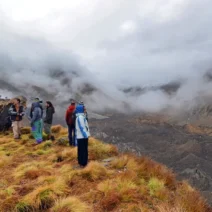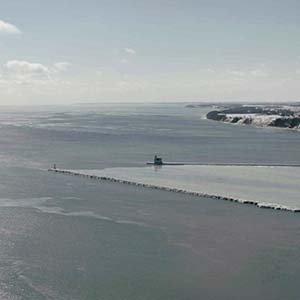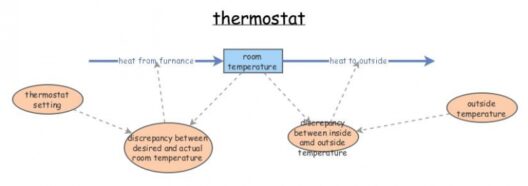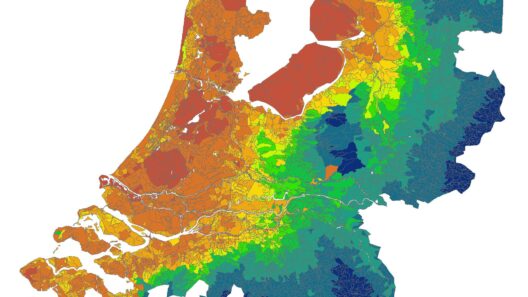Wisconsin, often regarded as the Badger State, presents a remarkable tapestry of climate that fluctuates with the rhythm of the seasons. Nestled in the heart of the American Midwest, this region experiences a mélange of meteorological phenomena, rendering it a veritable microcosm of climatic extremes. From frigid winters characterized by a snowy embrace to sultry summers soaked in humidity, Wisconsin’s climate is a dynamic interplay between nature’s caprice and geographic influence.
The winter months in Wisconsin unfold like a finely composed symphony, where frigid winds orchestrate a landscape blanketed in crystalline snow. The season typically stretches from late November to early March, with temperatures often plummeting to bone-chilling lows. The polar vortex, an Arctic blast of cold air, sometimes descends upon the state, transforming outdoor life into an endurance test. In January, the average temperature can hover around a bracing 10°F (-12°C), making bundled-up winter apparel a necessity.
Yet, this harsh reality is counterbalanced by the breathtaking beauty of winter in Wisconsin. The state’s vast forests, dotted with coniferous trees, stand resilient beneath the weight of snow, their limbs glistening like jeweled chandeliers when kissed by sunlight. The lakes, once teeming with life, freeze into reflective plates, inviting ice fishermen and winter sports enthusiasts to engage with nature in a different form. The enchanting allure of frozen landscapes attracts adventurers and families alike, who partake in activities such as snowmobiling, skiing, and making snow angels—a celebration of resilience in the face of adversity.
However, as the frigid grasp of winter begins to relinquish its hold, Wisconsin spring emerges like a timid artist uncovering a canvas of possibilities. The thawing of ice reveals a world awakening from slumber. Warmer temperatures gradually paint the landscape in vibrant hues, with blooming wildflowers and budding trees signaling the promise of renewal. This transitional period, though often punctuated by erratic weather patterns, showcases Wisconsin’s ability to showcase drastic shifts in nature, like a chameleon changing colors.
As spring tiptoes into summer, Wisconsin transforms into a paradise of lush greenery and vibrant activity. The summer months, particularly June through August, are characterized by warm temperatures with an average high reaching around 80°F (27°C). However, the state’s climate varies geographically. The northern part often enjoys cooler evenings, providing a reprieve from the heat, whereas the southern region experiences sweltering conditions accompanied by high humidity. This contrast serves to remind us of the diverse ecological niches nestled within Wisconsin’s borders.
Summer in Wisconsin is an exuberant display of life, bursting forth with festivals, lakeside picnics, and outdoor concerts. The lakes, integral to Wisconsin’s identity—infused with a spirit of conviviality—become playgrounds for swimming, boating, and fishing. The bustling sounds of nature intertwine with the laughter of locals, creating a harmonious symphony celebrating life under the warm sun. Farmers’ markets brim with seasonal produce, a testament to the state’s agricultural prowess, as kitchens come alive with dishes inspired by fresh, locally sourced ingredients.
Yet, as the sun reigns supreme, signs of climate change loom ominously over the horizon. Wisconsin’s winters are steadily warming, like an ice sculpture melting under a relentless spotlight. Research suggests that global warming is displacing long-established weather patterns, with winters now becoming milder and less predictable. As a result, the beloved snow sports and ice fishing experiences integral to the state’s culture face an uncertain future. The phenomenon poses a profound challenge, as iconic traditions risk fading into remembrance.
Late summer can usher in temperatures that soar into the high 90s (°F), often accompanied by oppressive humidity, conjuring the discomfort of walking through a dense fog. Thunderstorms frequently punctuate these summer days, forming fleeting yet intense downpours, reminiscent of nature’s tempered fury. These storms serve as reminders of the precarious balance in the climate, casting a spotlight on the urgent need for environmental stewardship.
As autumn descends upon the state, Wisconsin embraces yet another transformation reminiscent of an artist’s final strokes on a masterpiece. The foliage metamorphoses into a vibrant palette of reds, oranges, and yellows, drawing flocks of leaf-peepers to witness nature’s annual spectacle. The crisp air carries a hint of the impending winter, and the tranquil rustling of leaves whispers promises of change and introspection. It is during this fleeting, transitional season that the connection between people and the land becomes poignantly evident; the harvest season brings communities together, fostering a sense of unity and shared purpose.
In conclusion, the climate of Wisconsin is a breathtaking mosaic, interwoven with the threads of frigid winters and humid summers. Each season portrays a distinct narrative that showcases the stark contrast between nature’s dualities. While the state revels in its seasonal variations, it now faces pressing challenges as climate change calls into question the stability of these once-reliable cycles. It is imperative that residents recognize their coalescence with the environment, embracing sustainable practices that honor the land and protect this precious heritage for future generations. Only through concerted efforts can Wisconsin ensure that the charm and vibrancy of its unique climate endure, allowing the legacy of its seasons to flourish once more.







